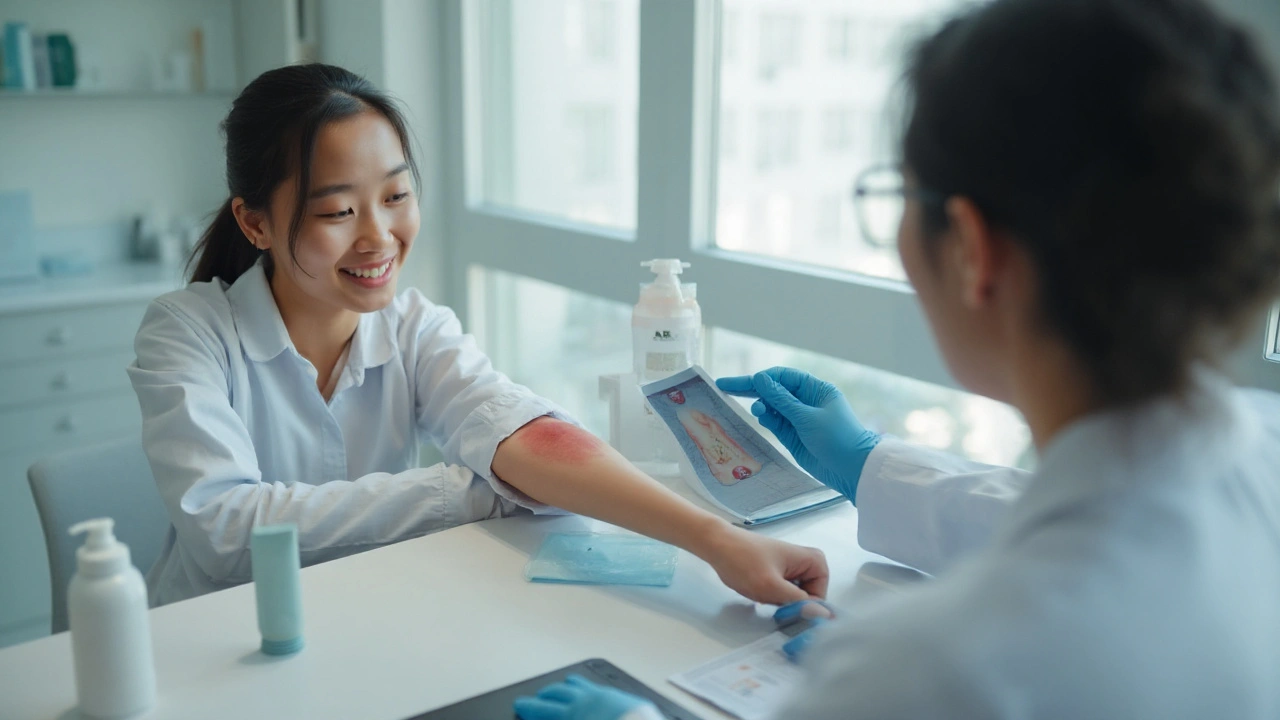Elidel (Pimecrolimus) – Quick Guide for Patients and Clinicians
If you’ve been prescribed a cream called Elidel, you probably wondered what makes it different from regular steroid ointments. Elidel contains pimecrolimus, a topical immunomodulator that calms the skin’s immune response without the steroid‑related thinning you hear about. It’s mainly used for mild‑to‑moderate atopic dermatitis (eczema) when other treatments aren’t enough.
How does it work? Pimecrolimus blocks an enzyme called calcineurin, which stops T‑cells from releasing inflammatory chemicals. In plain terms, it tells the immune system to back off, so the red, itchy patches calm down. Because it targets the immune pathway directly, it avoids many of the side effects linked to steroids, like stretch marks or skin thinning.
How to Apply Elidel Correctly
Start with clean, dry skin. Apply a thin layer—about the size of a pea—to the affected area twice a day, usually in the morning and evening. Don’t rub it in aggressively; a gentle pat works fine. If you miss a dose, just apply it as soon as you remember, but don’t double up. For children older than two years, the same routine applies, but keep an eye on any irritation.
Most people see improvement within two to four weeks. If there’s no change after six weeks, talk to your doctor about adjusting the plan. Remember, Elidel isn’t a cure; it manages flare‑ups while you keep your skin moisturized with fragrance‑free creams.
Possible Side Effects and Safety Tips
Common complaints are mild burning, stinging, or itching right after application. Those sensations usually fade after a few days. Rarely, you might notice skin redness, infection, or a rash that looks like an allergic reaction. If any of these get worse, stop using the cream and call your provider.
Because pimecrolimus affects the immune system, doctors advise against using Elidel on infected skin, open wounds, or areas with active herpes. It’s also not recommended for people with a weakened immune system unless a specialist says it’s okay.
One big question is cancer risk. Large studies haven’t shown a clear link between Elidel and skin cancer, but the FDA still carries a warning to use it only when needed and stop if you notice unusual growths.
Elidel can interact with other topical medications. If you’re using a steroid cream, wait at least 30 minutes after the steroid is fully absorbed before putting on Elidel. Oral antibiotics, antihistamines, or other systemic drugs don’t usually cause problems, but always double‑check with your pharmacist.
Cost can be a hurdle. Elidel is a brand‑only product, so it’s pricier than generic steroids. Some insurance plans cover it for severe eczema, especially when steroids have failed. Ask your doctor about patient‑assistance programs if cost is an issue.
In summary, Elidel offers a steroid‑free option for controlling eczema flare‑ups. Apply a thin layer twice daily to clean skin, watch for mild burning or redness, and avoid using it on broken skin. If you’re unsure whether it’s right for you, a quick chat with your dermatologist can clear things up.

- Sep, 14 2025
- Comments 5